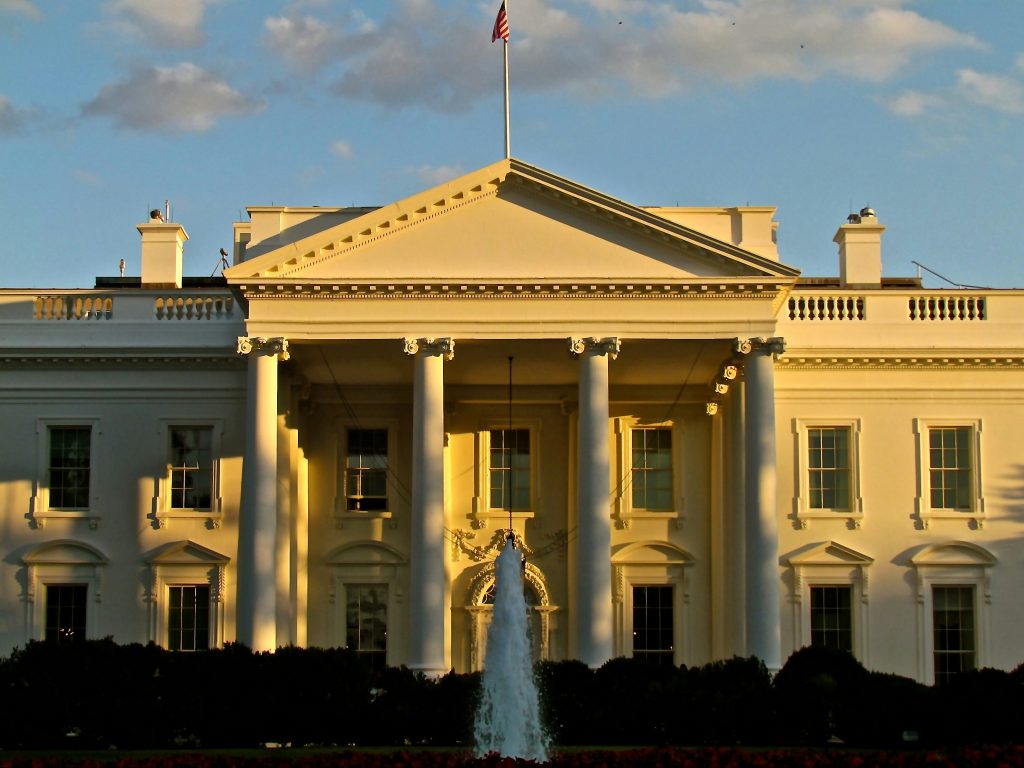Drug Money: How Pharmaceutical Companies Are Paying for the Lives Lost to the Opioid Epidemic

By Grace Taskinsoy*
As the U.S. opioid epidemic continues to affect millions of Americans, pharmaceutical manufacturers and distributors find themselves in a harrowing position.[1] Companies including Allergan, AmerisourceBergen, Cardinal Health, Costco, CVS, Endo International, Johnson & Johnson, McKesson, Rite-Aid, Teva Pharmaceuticals, Walgreens, and Wal-Mart are being sued by states, municipalities, and individuals for the role they played in the opioid epidemic.[2] The plaintiffs are claiming that the opioid manufacturers and distributors not only aggressively marketed opioids to physicians and the public, but that they also downplayed the risk of addiction and failed to monitor the distribution of opioids, which resulted in the deaths of more than 500,000 Americans.[3]
The opioid epidemic lawsuits began when West Virginia sued Purdue Pharma in 2004 for aggressively marketing OxyContin to West Virginia residents and concealing the drug’s addiction risks.[4] In 1996, Purdue Pharma introduced the drug OxyContin into the pain-relief community and influenced the first wave of the opioid epidemic.[5] The drug was aggressively marketed, and only eight years after its release, it became the “leading drug of abuse in the United States.”[6] One of Purdue Pharma’s marketing techniques was to specifically target the physicians who were identified as the highest prescribers of opioids throughout the United States.[7] Purdue Pharma also targeted primary care physicians and encouraged them to liberally prescribe opioids.[8] In 2003, half of the total physicians that were prescribing OxyContin were primary care physicians.[9] This posed an issue because unlike medical specialists, primary care physicians are not always trained on the care and “management of specific conditions,” such as chronic pain.[10]
On top of everything, Purdue Pharma assured the public that the risk of addiction to OxyContin was “extremely small” and trained their sales associates to spread the message that “the risk of addiction was less than one percent.”[11] Additionally, as concerns about addiction and overdoses grew, Richard Sackler, the former president of Purdue Pharma, diverted blame onto the opioid users and told the company to “hammer on the abusers in every way possible.”[12] After countless lawsuits, Purdue Pharma recently agreed to a dissolution plan and a $6 billion settlement, which will be put into a trust and used to pay the plaintiff states and victims.[13]
Following the Purdue Pharma lawsuit, Johnson & Johnson, a manufacturer of opioids, and “the big three” opioid distributors, AmerisourceBergen, Cardinal Health, and McKesson, began facing thousands of opioid-related lawsuits from state and local governments and their citizens starting in 2014.[14] A spotlight was directed at the companies’ wrongdoings and troubling actions that allegedly helped fuel the opioid epidemic.[15] These companies ignored red flags, targeted small rural communities, and encouraged physicians to over-prescribe opioids.[16]
On February 25, 2022, the companies agreed to a $26 billion settlement, which was contingent on whether the companies believed enough state and local governments signed onto the settlement and gave up their right to sue.[17] As of now, all 50 states and the District of Columbia will receive a portion of the settlement.[18] The settlement payments started in April 2022 and will continue for almost twenty years.[19] Johnson & Johnson will pay a total of $5 billion over nine years, and AmerisourceBergen, Cardinal Health, and McKesson will pay a combined total of $21 billion over eighteen years.[20]
Although roughly 85% of each state’s settlement proceeds will be earmarked for “healthcare,” education, and other “addiction treatment and prevention services,” the states must still decide how they want to use, distribute, and allocate the funds.[21] This month, Arizona lawmakers decided to use the first $4 million installment of the state’s $540 million settlement to create grants that will be “available to organizations fighting the opioid crisis” across Arizona.[22] The funds will be distributed across Arizona’s fifteen counties and “medically underserved populations statewide.”[23] The grants will be used for “opioid treatment, prevention, and education” including “opioid use disorder treatment, support for people in treatment and recovery, and preventing the misuse of opioids.”[24] Arizona nonprofit, for-profit, and faith-based organizations, as well as community coalitions, can apply to receive the grants.[25]
Purdue Pharma, Johnson & Johnson, and “the big three” aren’t the only companies that have proposed settlement offers. Teva Pharmaceuticals, one of the biggest manufacturers of generic opioids in the United States, recently proposed a settlement for $4.25 billion after it received over 2,500 lawsuits from local governments, states, and tribes.[26] The settlement will be paid in installments over thirteen years.[27] Teva was said to have produced “far more prescription opioids during the peak years of the crisis than [other] opioid manufacturers such as Johnson & Johnson.”[28] It is also alleged that Teva, like many other opioid manufacturers and distributors, “play[ed] down the risks of addiction and fail[ed] to stop pills from being diverted for illegal use.”[29]
Additionally, pharmacy chains such as CVS, Walgreens, and Wal-Mart are being accused of “failing to implement adequate safety and monitoring systems for high-risk medications,” such as opioids.[30] States are seeking damages for costs related to the opioid epidemic, including hospital expenses, “emergency room costs,” “dealing with and fighting crime related to opioids,” and “larger foster care programs.”[31] Wal-Mart is also being accused of ignoring red flags amid the rapid increase of opioid sales.[32] In 2012, a Wal-Mart pharmacist described arriving at work early in the morning only to see a line of fifteen to twenty people already waiting to get their opioid prescriptions refilled.[33] He couldn’t understand why patients were driving such long distances to get their pills from Wal-Mart specifically and why they couldn’t explain their need for “such powerful opioid doses.”[34] For many years, Wal-Mart received and ignored multiple reports from pharmacists who were concerned “about the doctor up the corporate chain” and continued to “dispense thousands of opioid pills.”[35]
As of now, Florida has received a $484 million settlement from CVS and a $638 million settlement from Walgreens.[36] Additionally, West Virginia has received an $82.5 million settlement from CVS and a $65 million settlement from Wal-Mart.[37]
Although these pharmaceutical companies have agreed to abundant settlements with state and local governments and the funds will be used toward addiction treatment and prevention, the companies fail to take responsibility for their actions that have fueled the opioid epidemic and affected hundreds of thousands of people and families.[38] Not only did an AmerisourceBergen executive refer to the West Virginians who are addicted to OxyContin as “pillbillies,” but the executive also responded to Kentucky’s new opioid regulations by stating “one of the hillbilly’s [sic] must have learned how to read :-).”[39]
Unfortunately, these settlements do not fix the problem. Although Johnson & Johnson has agreed to “permanently end its manufacturing and distribution of opioids nationwide” as part of its settlement agreement, the other companies facing these opioid-related lawsuits will continue manufacturing and distributing opioids.[40] It is important to recognize the role these pharmaceutical companies have played in fueling the illegal drug market as the opioid epidemic rapidly shifts from “prescription opioids to heroin, illicitly manufactured fentanyl, and other illicit drugs.”[41] When individuals who are addicted to prescription opioids are no longer able to renew or afford their prescriptions, they may resort to cheaper methods of obtaining opioids or opiates through the illegal drug market.
Although we cannot reverse the effects of the pharmaceutical companies’ actions, we can try to make a difference in the next generation. Initiatives and programs are being implemented at the state and federal levels to help spread knowledge of addiction risks and prevent inappropriate use of opioids.
Ultimately, these settlements will never be able to make up for the lives lost to the opioid epidemic and the negligence and intentional wrongdoings of the pharmaceutical companies. Right now, it is up to the states receiving portions of the settlements to use those funds to implement programs such as state drug courts, resources, and regulations to aid those who have fallen victim to the opioid epidemic.[42]
* J.D. Candidate, Class of 2024, Sandra Day O’Connor College of Law at Arizona State
University.
[1] Opioid Crisis Statistics, DEP’T HEALTH & HUMAN SERVICES, https://www.hhs.gov/opioids/about-the-epidemic/opioid-crisis-statistics/index.html (last visited Oct. 24, 2022).
[2] Michelle Llamas, Opioid Lawsuits, DRUGWATCH (Sept. 8, 2022), https://www.drugwatch.com/opioids/lawsuits/.
[3] Understanding the Opioid Overdose Epidemic, CTRS. DISEASE CONTROL & PREVENTION, https://www.cdc.gov/opioids/basics/epidemic.html#:~:text=The%20first%20wave% 20began%20with,overdose%20deaths%20involving%20heroin4 (last visited Oct. 24. 2022).
[4] Rebecca Haffajee & Michelle M. Mello, Drug Companies’ Liability for the Opioid Epidemic, NAT’L LIBR. MED. (Dec. 14, 2017), https://www.ncbi.nlm.nih.gov/pmc/articles/PMC7479783/#:~:text=The%20earliest%20suits% 20against%20opioid,Opioid%20Companies%2C%202004
%E2%80%932017; Jan Hoffman, Teva Reaches Tentative $4.25 Billion Settlement Over Opioids, N.Y. TIMES (July 26, 2022), https://www.nytimes.com/2022/07/26/health/teva-opioids-settlement.html.
[5] CTRS. DISEASE CONTROL & PREVENTION, supra note 3.
[6] Art Van Zee, The Promotion and Marketing of OxyContin: Commercial Triumph, Public
Health Tragedy, NAT’L LIBR. MED. (Feb. 2009), https://www.ncbi.nlm.nih.gov/pmc/articles
/PMC2622774/#:~:text=When%20Purdue%20Pharma%20introduced%20OxyContin,almost %20%241.1%20billion%20in%202000.
[7] Id.
[8] Id.
[9] Id.
[10] Id.; Get to Know Your Doctors: Primary Care Versus Specialists, DRS. OSTEOPATHIC MED., https://findado.osteopathic.org/get-to-know-your-doctors-primary-care-physicians-and-specialists#:~:text=While%20PCPs%20have%20broad%20knowledge,based%20on% 20their%20respective%20specialties (last visited Oct. 24, 2022).
[11] Van Zee, supra note 6.
[12] Andrew Joseph, ‘A Blizzard of Prescriptions’: Documents Reveal New Details About
Purdue’s Marketing of OxyContin, STAT (Jan. 15, 2019), https://www.statnews.com/2019/01/15/massachusetts-purdue-lawsuit-new-details/.
[13] Dietrich Knauth & Tom Hals, Purdue Pharma Judge Overrules DOJ to Approve $6 Bln
Opioid Settlement, REUTERS (Mar. 9, 2022), https://www.reuters.com/legal/transactional/purdue-seeks-approval-6-billion-opioid-settlement-over-state-doj-objections-2022-03-09/.
[14] Opioid Litigation Global Settlement Tracker, OPIOID SETTLEMENT TRACKER,
https://www.opioidsettlementtracker.com/globalsettlementtracker (last visited Oct. 24, 2022); Brian Mann, 4 U.S. Companies Will Pay $26 Billion to Settle Claims They Fueled the Opioid Crisis, NAT’L PUB. RADIO (Feb. 25, 2022), https://www.npr.org/2022/02/25/1082901958/opioid-settlement-johnson-26-billion.
[15] Mann, supra note 12.
[16] Id.; Van Zee, supra note 6.
[17] Geoff Mulvihill, J&J, Distributors Finalize $26B Landmark Opioid Settlement,
ASSOCIATED PRESS (Feb. 25, 2022), https://apnews.com/article/coronavirus-pandemic-business-health-opioids-camden-dec0982c4c40ad08b2b30b725471e000.
[18] Opioid Litigation States’ Opioid Settlement Statuses (BETA), OPIOID SETTLEMENT
TRACKER, https://www.opioidsettlementtracker.com/globalsettlementtracker/#statuses (last visited Oct. 24, 2022) (list of all money being allocated to each state in each lawsuit).
[19] Mann, supra note 12.
[20] Jan Hoffman, Companies Finalize $26 Billion Deal With States and Cities to End Opioid
Lawsuits, N.Y. TIMES (Feb. 25, 2022), https://www.nytimes.com/2022/02/25/health/opioids-settlement-distributors-johnson.html.
[21] Mann, supra note 17; Hoffman, supra note 18.
[22] Arizona AG Allocates $4M From Pharmaceutical Settlements to Fight Opioid Crisis, KTAR NEWS (Oct. 13, 2022), https://ktar.com/story/5290185/arizona-ag-allocates-4m-from-pharmaceutical-settlements-to-fight-opioid-crisis/.
[23] Id.
[24] Id.
[25] Id.
[26] Steven Scheer, Teva Expects to Start Paying U.S. Opioid Settlement in 2023, REUTERS (Sept. 19, 2022), https://www.reuters.com/world/us/teva-pharm-expects-start-paying-us-opioid-settlement-2023-ceo-2022-09-18/.
[27] Id.
[28] Hoffman, supra note 4.
[29] Scheer, supra note 24.
[30] Brian Mann, A Landmark Opioid Trial Puts Spotlight on Pharmacy Chains CVS, Walmart
and Walgreens, NAT’L PUB. RADIO (Oct. 4, 2021), https://www.npr.org/2021/10/04/1041979845/a-landmark-opioid-trial-puts-spotlight-on-pharmacy-chains-cvs-walmart-and-walgre.
[31] Id.
[32] Brian Mann, Former Walmart Pharmacists Say Company Ignored Red Flags As Opioid
Sales Boomed, NAT’L PUB. RADIO (Jan. 3, 2021), https://www.npr.org/2021/01/03/950870632/former-walmart-pharmacists-say-company-ignored-red-flags-as-opioid-sales-boomed.
[33] Id.
[34] Id.
[35] Id.
[36] Press Release, CVS Health, CVS Health Reaches Opioid Settlement Agreement With State of Florida (Mar. 30, 2022), https://www.cvshealth.com/news-and-insights/press-releases/cvs-health-reaches-opioid-settlement-agreement-with-state-of; Dietrich Knauth, Walgreens Reaches $683 Mln Opioid Settlement With Florida, REUTERS (May 5, 2022), https://www.reuters.com/business/healthcare-pharmaceuticals/walgreens-reaches-683-mln-opioid-settlement-with-florida-2022-05-05/; OPIOD SETTLEMENT TRACKER, supra note 16.
[37] Dietrich Knauth, CVS, Walmart Reach $147.5 Mln Opioid Settlement With West Virginia,
REUTERS (Sept. 20, 2022), https://www.reuters.com/business/healthcare-pharmaceuticals/cvs-health-walmart-reach-1475-mln-opioid-settlement-with-west-virginia-attorney-2022-09-20/; OPIOID SETTLEMENT TRACKER, supra note 16.
[38] Mulvihill, supra note 15; Scheer, supra note 24.
[39] Mann, supra note 12; Chris McGreal, Big Pharma Executives Mocked ‘Pillbillies’ in Emails, West Virginia Opioid Trial Hears, GUARDIAN (May 16, 2021), https://www.theguardian.com/us-news/2021/may/16/amerisourcebergen-pillbillies-emails-west-virginia-opioid-trial-.
[40] Kevin Dunleavy, Johnson & Johnson Inks Eleventh-Hour Settlement Worth $230M to Avoid NY Opioid Trial, FIERCE PHARMA (June 28, 2021), https://www.fiercepharma.com/pharma/n-y-opioid-case-looming-johnson-johnson-inks-230m-settlement#:~:text=As%20part%20of%20the%20settlement,two%20 decades%2C%20CDC%20data%20show.
[41] Pain Management and the Opioid Epidemic: Balancing Societal and Individual Benefits
and Risks of Prescription Opioid Use, NAT’L LIBR. MED. (July 13, 2017), https://www.ncbi.nlm.nih.gov/books/NBK458661/.
[42] Press Release, Ctrs. Disease Control & Prevention, CDC Launches Campaign to Help States Fight Prescription Opioid Epidemic (Sept. 25, 2017), https://www.cdc.gov/media/releases/2017/p0925-rx-awareness-campaigns.html.


